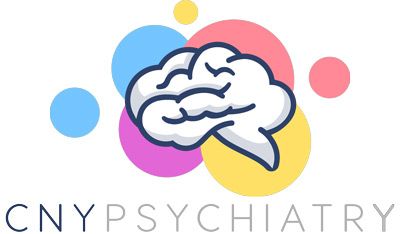HOW DOES TMS THERAPY WORK?
The mechanism of action of TMS is still not fully understood; however, the response to therapy is indisputable and has consistently demonstrated results in the majority of research being done in the field and we see tremendous results in our own practice.
TMS WORKS
"Let me share with you how TMS works" -Dr. Stepkovitch
"The TMS electromagnetic pulse is generated by an electrical current running through the TMS coil, which by method of induction (Faraday’s law) generates a magnetic field perpendicular to the coil. This magnetic field passes through the skull unimpeded and in turn generates a corresponding electric field in the brain, also by method of induction. This electric field is conducted by neural pathways under the coil in a somewhat unpredictable way as brain tissue is not uniform and anatomy varies from individual to individual.
Neurons are conductive just like the rest of the nerve fibers in your body. Depending on the protocol used and frequency of TMS pulse, entire regions of neurons under the coil can either become excited or inhibited. In depression, neurons in the left DLPFC (Dorsolateral prefrontal cortex) are targeted by the coil with an excitatory protocol (FDA cleared). Subtle changes in brain state, as a result of TMS, can last up to several hours and even days after a TMS session has been performed. If done repetitively over a 3-6 week period, TMS induces structural changes in the brain where the coil has been placed. Increased gray matter density and blood flow to the part of the brain stimulated have all been clearly demonstrated in research using MRI brain scans.
Not everyone responds to TMS therapy for depression, but most people will. Many clinicians see a 70% – 80% response rate in their patient population. At least half of these responders will achieve full remission. In the literature, TMS response rates when treating depression have been shown to be at least as effective as medications used to treat depression. And, of course without all the side effects that medications bring.
Many patients say they can still feel benefit from TMS therapy years after their first round of TMS treatment. The effect appears to be quite durable especially in people who respond well to treatment. In some cases patients come back for a few TMS maintenance sessions 3-6 months after their initial treatment. At CNY TMS Psychiatry, our goal is to develop a treatment plan with you that helps you to maintain your relief from debilitating symptoms - so that you can live a much happier, healthier, more joy-filled life."
- Dr. Stepkovich
QUICK LINKS
FACTS & MYTHS ABOUT TMS
LEARN MORE ABOUT TMS THERAPY AS A SAFE AND EFFECTIVE TREATMENT ALTERNATIVE FOR VARIOUS MENTAL AND PHYSICAL HEALTH CONDITIONS.
MORE ABOUT TMS
Unlike psychiatric medications, TMS therapy does not cause undesired side effects, such as GI upset, constipation, headaches, insomnia or other sleeping problems, weight gain, sexual dysfunction, lethargy, cognitive deficits, or other systemic symptoms.
Unlike electroconvulsive therapy (ECT), TMS therapy does not induce a seizure or cause debilitating side effects, such as confusion, memory loss, muscle spasms, psychosis, and TMS is not an invasive procedure requiring anesthesia or medications of any kind.
At CNY TMS Psychiatry nearly 75% of patients who elect TMS therapy as a treatment option can expect a significant reduction in their symptoms with notable improvements in sleep, mood, cognition, and an increase in energy and level of motivation.

